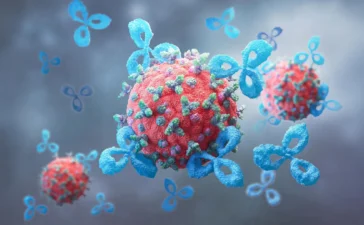Enhanced Raman microscopy of cryofixed specimens: Clearer and sharper chemical imaging
Understanding the behavior of the molecules and cells that make up our bodies is critical for the advancement of medicine. This has led to a continual push for clear images of what is happing beyond what the eye can see. In a study recently published in Science Advances,researchers from Osaka University have reported a method that gives high-resolution Raman microscopy images.
Raman microscopy is a useful technique for imaging biological samples because it can provide chemical information about specific molecules — such as proteins — that take part in the body’s processes. However, the Raman light that comes from biological samples is very weak, so the signal can often get swamped by the background noise, leading to poor images.
The researchers have developed a microscope that can maintain the temperature of previously frozen samples during the acquisition. This has allowed them to produce images that are up to eight times brighter than those previously achieved with Raman microscopy.
“One of the main reasons for blurry images is the motion of the things you’re trying to look at,” explains lead author of the study, Kenta Mizushima. “By imaging frozen samples that were unable to move, we could use longer exposure times without damaging the samples. This led to high signals compared with the background, high resolution, and larger fields of view.” The technique uses no stains and doesn’t require any chemicals to fix the cells in position, so can provide a highly representative view of processes and cell behavior.
The team was also able to confirm that the freezing process conserved the physicochemical states of different proteins. This gives the cryofixing approach a distinct advantage of achieving what the chemical fixing methods cannot.
“Raman microscopy adds a complementary option to the imaging toolbox,” says senior author Katsumasa Fujita. “The fact that it not only provides cell images, but also information about the distribution and particular chemical states of molecules, is very useful when we are continually striving to achieve the most detailed possible understanding.”
The new technique can be combined with other microscopy techniques for detailed analysis of biological samples and is expected to contribute to a wide range of areas in the biological sciences including medicine and pharmaceutics.
You Might Also Like
Eating more vitamin C can physically change your skin
Scientists at the University of Otago, Faculty of Medicine -- Christchurch Ōtautahi, have identified a direct connection between how much...
MIT scientists strip cancer of its sugar shield
A research team from MIT and Stanford University has developed a new technique designed to push the immune system to...
This “mushroom” is not a fungus, it’s a bizarre plant that breaks all the rules
In the damp shade beneath moss-covered trees, high in the mountains of Taiwan and mainland Japan or deep within the...
A quantum mystery that stumped scientists for decades is solved
A global research team led by Rice University physicist Pengcheng Dai has verified the presence of emergent photons and fractionalized...









